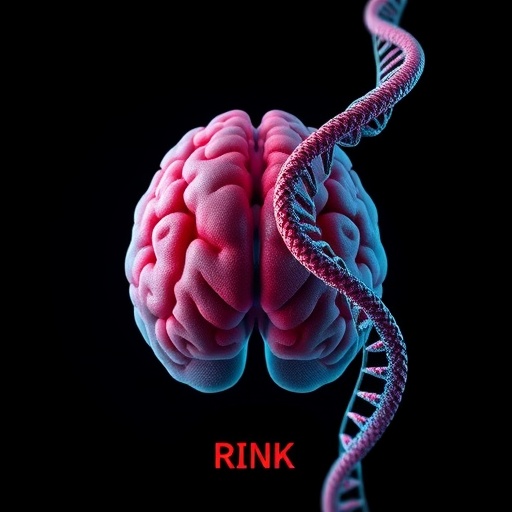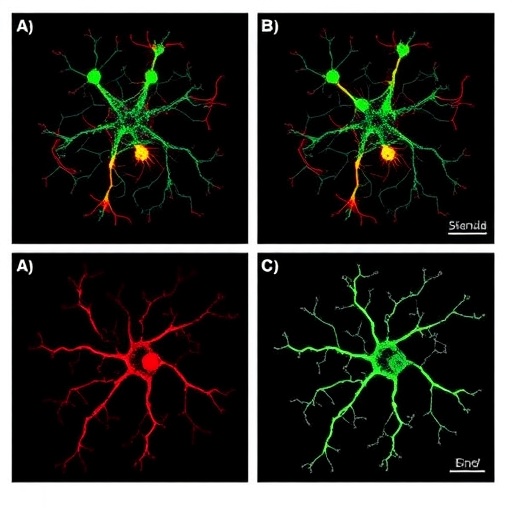For decades, the scientific community has drawn clear distinctions between neurological and psychiatric disorders, often treating them as fundamentally separate categories with distinct causes and treatment pathways. Neurological conditions were traditionally viewed as primarily resulting from identifiable brain injuries or pathologies, while psychiatric illnesses were considered disorders of the mind with complex, multifaceted origins. However, a groundbreaking study published in Nature Neuroscience in 2025 is now challenging this long-held dichotomy, unraveling a web of shared genetic influences underpinning both types of disorders. This research pioneers a comprehensive genome-wide investigation into the common genetic architecture shared by an expansive array of neurological and psychiatric diseases, encompassing nearly one million cases across twenty disorders.
The study, led by Smeland and colleagues, leverages the power of genome-wide association studies (GWAS) to interrogate the genetic underpinnings of ten neurological disorders and ten psychiatric conditions alike. Historically, while epidemiological and clinical observations hinted at some overlap between neurological and psychiatric diseases, the genetic evidence remained fragmented and inconclusive. Here, the researchers employed advanced statistical frameworks designed to parse out subtle shared genetic signals, detecting a surprisingly large suite of common genetic variants that influence risk across both domains. These findings suggest genetic pleiotropy—the phenomenon where a single genetic variant affects multiple phenotypic traits—is a more pervasive force in brain disorders than previously appreciated.
One of the most startling revelations from this research is that significant shared genetic influences exist even when overall genetic correlations between disorder pairs are minimal or absent. Genetic correlation generally measures the extent to which genetic factors affect two traits in a correlated manner; the presence of shared variants without clear correlation implies a highly complex genetic landscape where the same variants may contribute to different disorders via distinct biological pathways or regulatory contexts. This decoupling broadens our understanding of genetic risk, shedding light on the nuanced interplay between mutation effects, gene expression, and environmental interactions across neurological and psychiatric spectrums.
Delving deeper, the study revealed striking biological distinctions in the genetic mechanisms driving psychiatric and neurological disorders despite overlapping variants. Psychiatric diseases uniformly implicated neuronal biology pathways—especially those involving synaptic function, neurotransmission, and neurodevelopmental processes. Such findings coherently align with decades of research emphasizing synapse dysfunction and altered neural circuitry as core features of psychiatric pathology. Conversely, neurological disorders exhibited a more heterogeneous landscape of implicated neurobiological processes, ranging from inflammation and myelination defects to protein misfolding and mitochondrial dysfunction. This heterogeneity underscores the multifactorial nature of neurological diseases and the diverse brain systems they affect.
By integrating vast GWAS datasets, the investigators not only cataloged shared genetic variants but also mapped their functional consequences to specific biological modules and molecular pathways. This integrative approach enabled the identification of convergent mechanistic nodes where genetic susceptibilities for distinct disorders converge, offering tantalizing targets for future therapeutic development. For example, genes involved in immune modulation and neuroinflammation arose recurrently among neurological diseases, providing genetic validation for existing theories about inflammation’s role in neurodegeneration.
These revelations carry profound implications for the conceptual frameworks underpinning brain disorder classification. The evidence for extensive genetic pleiotropy challenges the traditional rigid boundary that separates neurological and psychiatric diseases, advocating instead for a more continuum-based model of brain disorder risk. This has the potential to spark paradigm shifts in diagnosis, encouraging clinicians to consider overlapping pathophysiological processes rather than isolated symptom domains. A more integrated classification system could ultimately enhance precision medicine approaches, tailoring interventions based on shared genetic risk profiles rather than solely on clinical presentation.
Furthermore, the study’s findings emphasize the importance of cross-disciplinary collaboration among neurologists, psychiatrists, geneticists, and computational biologists. Historically, research and clinical practice have operated within siloed specialty areas, limiting the potential for cross-fertilization of ideas and breakthroughs. By unraveling shared genetic foundations, Smeland and colleagues provide a genetic “common language” that can facilitate integrated research strategies, pushing the field toward holistic understandings of brain disorders.
In terms of translational outcomes, a deeper appreciation of shared genetic risk variants holds promise for identifying drug repurposing opportunities. Medications developed for one disorder category might benefit patients suffering from genetically overlapping but clinically distinct brain conditions. The biological insights generated by this study can inform the design of clinical trials that stratify patients based on genetic risk architecture, potentially increasing treatment response rates and reducing adverse effects.
Importantly, this research highlights the indispensable role of large-scale genetic data aggregation and cutting-edge computational methods in uncovering subtle yet crucial biological signals. Analyzing nearly one million cases represents an unprecedented effort in the field, illustrating how collaborative consortia and global data sharing empower discoveries unattainable with smaller datasets. As genomic technologies continue to advance and biobank resources expand, similar integrative analyses can be expected to unlock further mysteries of brain disease complexity.
The study also raises intriguing questions about the evolutionary and developmental origins of pleiotropic risk variants. Understanding why the same genetic variants impact multiple brain disorders could illuminate fundamental principles about brain function and vulnerability. This opens new avenues for research exploring how genetic variation shapes neurodevelopmental trajectories or interacts with environmental exposures to influence lifelong brain health.
Moreover, the heterogeneity observed in neurological disorders’ biological associations underscores the need for personalized medicine approaches attuned to each disorder’s unique pathogenic mechanisms. While psychiatric disorders might share more uniform neuronal mechanisms that could be targeted by broadly effective drugs, neurological diseases may require bespoke interventions targeting inflammation, mitochondrial dysfunction, or other site-specific biological dysfunctions identified through genetic studies like this one.
Ultimately, Smeland et al.’s genome-wide analysis offers a transformative lens through which to view brain disorders—not as siloed diseases but as part of a complex genetic and biological tapestry interwoven with shared vulnerabilities and distinct pathological threads. This integrated perspective promises to accelerate discoveries, improve clinical outcomes, and redefine what it means to diagnose and treat brain disorders in the 21st century and beyond.
The challenges ahead involve translating these genetic insights into actionable clinical tools, developing robust biomarkers that reflect shared and disorder-specific biological processes, and fostering international cooperation to expand datasets for even more comprehensive analyses. As brain disorders continue to impose a colossal global burden, innovations arising from studies like this represent vital steps toward alleviating suffering and restoring brain health.
In conclusion, the paradigm-defying findings from this genome-wide study signal a new era of neuropsychiatric genetics that appreciates the intricate web of shared genetic influences spanning neurological and psychiatric disorders. These insights herald a future where disease classifications are more biologically informed, treatments are increasingly precise, and the boundaries between neurology and psychiatry blur in the face of shared genetic landscapes. The study not only enriches our understanding of brain disorder genetics but also highlights the promise of integrative, interdisciplinary approaches to deciphering the complexities of human brain health and disease.
Subject of Research: Genetic architecture and shared genetic risk factors of complex neurological and psychiatric disorders
Article Title: A genome-wide analysis of the shared genetic risk architecture of complex neurological and psychiatric disorders
Article References:
Smeland, O.B., Kutrolli, G., Bahrami, S. et al. A genome-wide analysis of the shared genetic risk architecture of complex neurological and psychiatric disorders. Nat Neurosci (2025). https://doi.org/10.1038/s41593-025-02090-2
Image Credits: AI Generated
DOI: https://doi.org/10.1038/s41593-025-02090-2
Tags: common genetic variantsgenetic architecture of diseasesgenetic pleiotropygenome-wide association studiesGWAS in mental healthimplications for treatment pathwaysinterdisciplinary research in psychiatryNature Neuroscience studyneurological disorderspsychiatric disordersshared genetic risksunderstanding brain disorders





